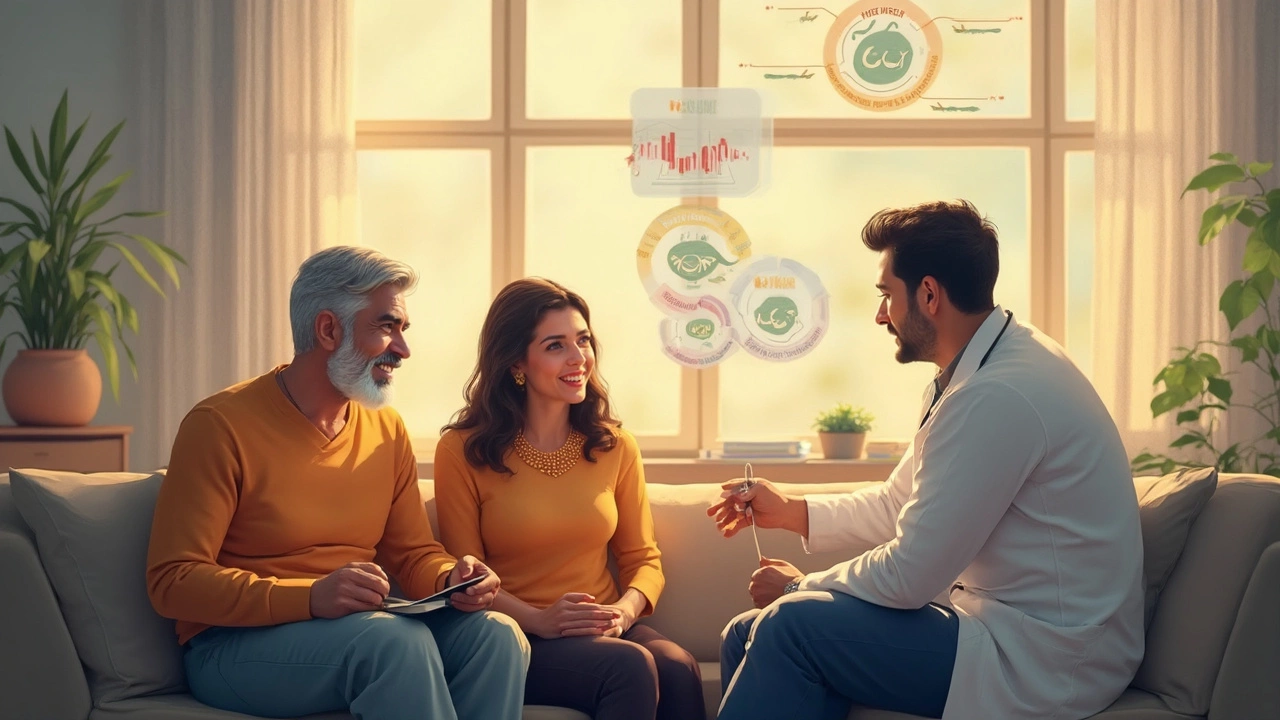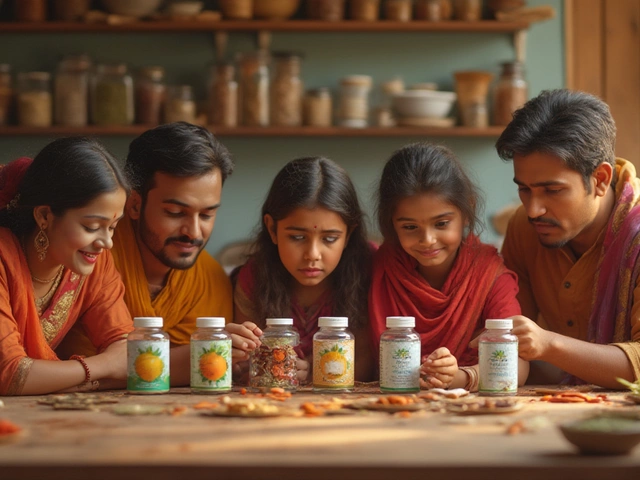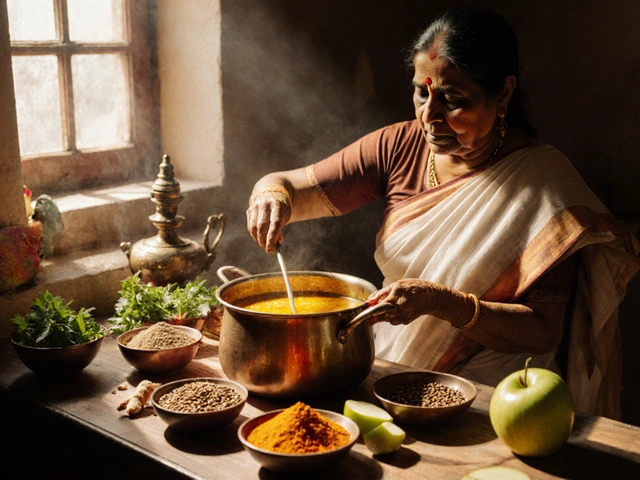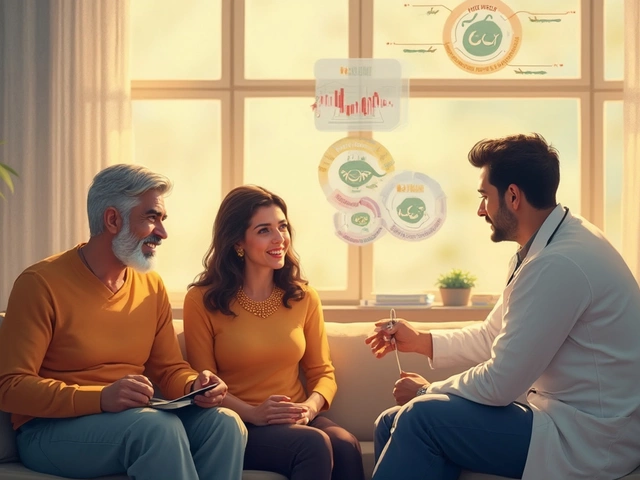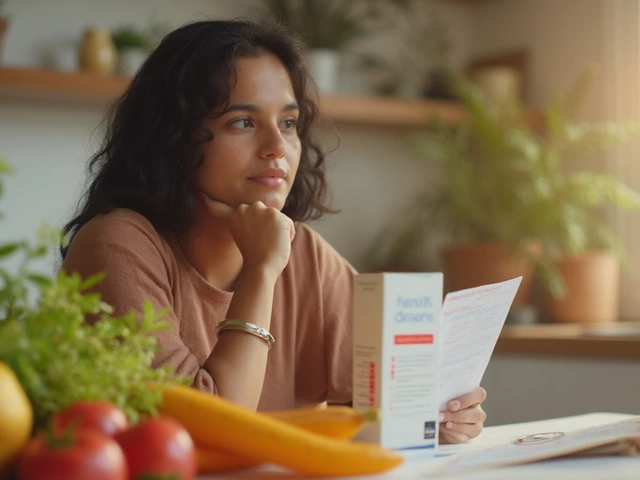When you’re deciding on diabetes medication, safety isn’t just a buzzword—it’s a lifeline. This article breaks down which diabetic medicines are considered safest and why, with a close look at side effects, real-world experience, and practical tips. You’ll see how the latest medicines stack up next to old favorites and learn what to chat about with your doctor. We’ll cut through the medical jargon and focus on what actually matters in everyday life. No sugarcoating, just straight answers.
Read MoreSafest Diabetic Medicine: Low‑Risk Options for Everyday Use
If you’re juggling blood‑sugar numbers, the last thing you want is a drug that makes you feel worse. Luckily, several diabetes medicines have built a reputation for being gentle on the body while keeping glucose in check. Below we break down what makes a diabetes pill safe and highlight the top low‑risk choices you’ll find at Indian pharmacies.
What Makes a Diabetes Drug Safe?
Safety isn’t just about “no side‑effects.” It’s about how a drug behaves in real‑world patients, especially those with kidney problems, heart disease, or older age. The safest options usually share a few traits:
- Predictable blood‑sugar lowering: The drug reduces glucose without causing big spikes or crashes.
- Minimal impact on kidneys and liver: It can be used even when organ function is reduced.
- Low risk of hypoglycemia: You won’t wake up shaking because the medicine dropped your sugar too far.
- Few drug‑drug interactions: It won’t mess with common heart medicines, blood thinners, or cholesterol pills.
When doctors talk about “first‑line” therapy, they’re usually pointing to a drug that hits most of these safety markers. In India, the most prescribed first‑line drug is metformin, and for good reason.
Top Low‑Risk Diabetes Medicines in India
1. Metformin (Glucophage, Gluco‑M)
Metformin is the global go‑to for type 2 diabetes. It works by improving insulin sensitivity and lowering liver glucose output. Most people tolerate it well; the most common side‑effect is mild stomach upset, which usually settles after a few weeks or with a low‑dose, extended‑release formula. It has a very low chance of causing hypoglycemia, making it safe for seniors.
2. SGLT‑2 Inhibitors (Dapagliflozin, Empagliflozin)
These pills help kidneys flush extra sugar in urine. Beyond blood‑sugar control, they lower blood pressure and protect the heart. They’re safe for most patients, but you should stay hydrated and watch for occasional urinary infections. In India, Dapagliflozin is widely available and priced competitively.
3. GLP‑1 Receptor Agonists (Semaglutide, Liraglutide – injectable)
GLP‑1 drugs mimic a gut hormone that boosts insulin release only when sugar is high, so the risk of low blood‑sugar is tiny. They also help with weight loss, which is a bonus for many diabetics. The main safety note is mild nausea when you start, which fades within a couple of weeks. New oral GLP‑1 options will soon hit Indian markets, expanding the low‑risk toolbox.
4. DPP‑4 Inhibitors (Sitagliptin, Vildagliptin)
These tablets block the breakdown of the same gut hormone used by GLP‑1 drugs, but they’re taken once daily and have an even milder side‑effect profile. They rarely cause hypoglycemia and are gentle on the stomach. Sitagliptin is common in Indian pharmacies and often paired with metformin for extra control.
5. Thiazolidinediones (Pioglitazone – used sparingly)
While effective, pioglitazone can cause fluid retention, so it’s not first‑line for people with heart failure. In well‑selected patients without cardiac issues, it’s still considered safe and can be a useful add‑on.
When choosing a safe diabetes medicine, talk with your doctor about your kidney function, heart health, and any other meds you’re on. The safest option for you might be a single drug or a combination that balances glucose control with minimal side‑effects.
Bottom line: Metformin remains the backbone of low‑risk diabetes therapy, but newer classes like SGLT‑2 inhibitors and GLP‑1 agonists are catching up fast, offering heart and kidney protection on top of sugar control. Keep an eye on how your body reacts, stay in touch with your health‑care team, and you’ll find a regimen that keeps your numbers steady without sacrificing your everyday comfort.
